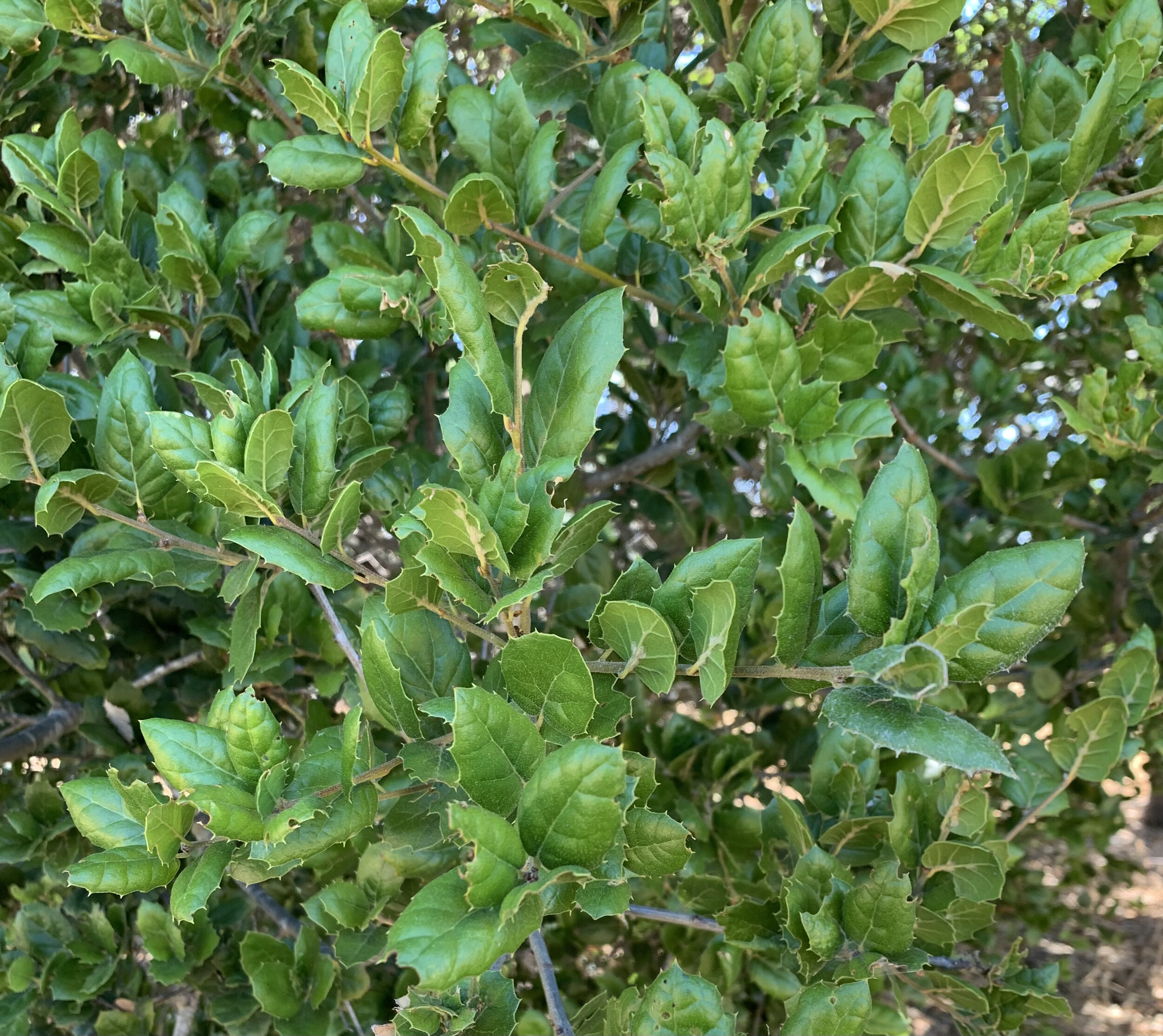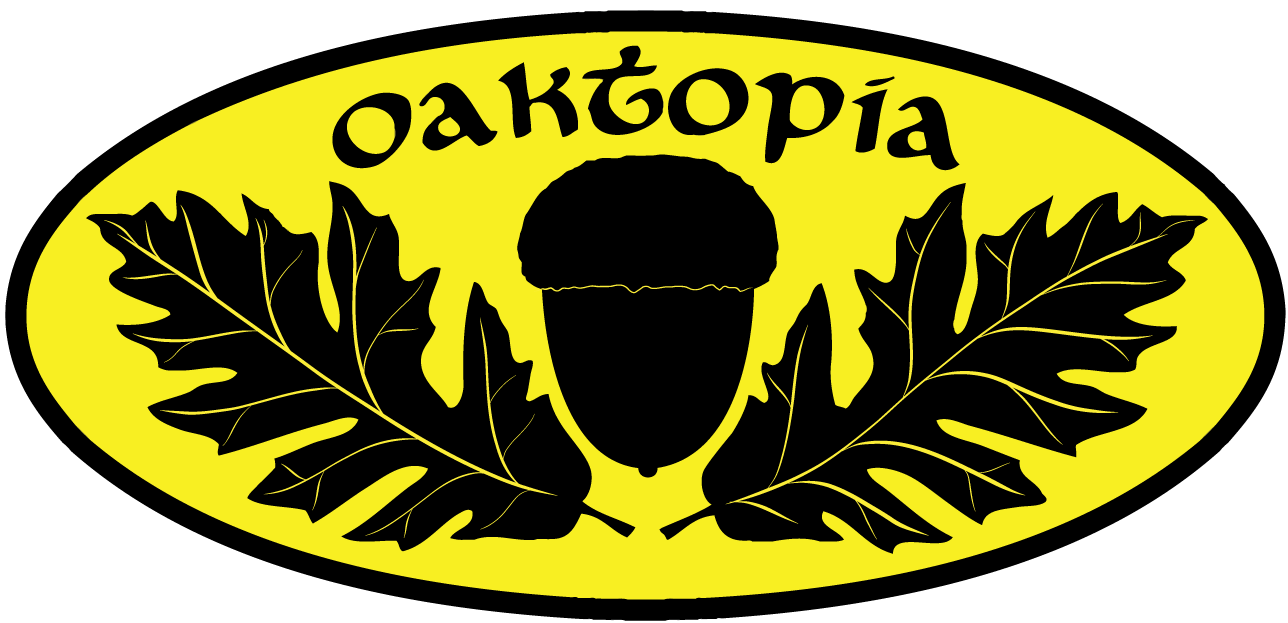Coast Live and Gander Oak
Quercus agrifolia and x ganderi
The coast live oak (Quercus agrifolia) is presently native to a narrow band of coastal California from Mendocino southward to northwestern Baja. Coast live oak hybridizes with at least five other related oaks, a family of trees typically referred to as the California black oaks. Confusingly variable hybrids can be found throughout the native range of coast live oak, and the genetic border between hybrid and species is always controversial.
For the vast majority of human Californians, coast live oak is, by a large margin, the most common native oak in their area, and is often the most common tree, period. But with so much hybridization and genetic introgression at play, coast live oak subtly varies throughout its range. When taken together, the trees we call coast live oak can perform quite variably in different geographical locations, showing a range of soil needs, disease susceptibility, structure, and more.
From here, this section takes on a personal tone, as there are few people alive who have planted and managed more coast live oaks than I have. After 32 years of planting as of this writing, I have a large population of "personal" coast live oaks to study, many of which I collected as acorns. Staying with these trees throughout their early lifespan, I have managed and maintained thousands, learning huge lessons in the process.
You see, I go back and visit my tree children, and they teach me truths that no human can.
I collected my first coast live oak acorns in 1989, a year after I graduated from Stanford University with a degree in mechanical engineering. Like many young people, I went through college with one idea of what I wanted to do with my life, and worked hard toward that goal. But as I stood at the brink of responsible adulthood, I questioned my vision and choices, and I set out down a different path.
A path which has turned out to involve a lot of acorns.
There are something in the neighborhood of 3,000 coast live oaks on the Stanford University campus which I had some hand in growing. These trees grow mainly on the Dish openspace behind the campus, augmented by several hundred more scattered about the main campus grounds.
Coast live oak knows my blood, my sweat, my tears, and my delight. There are numerous 40 to 50 foot tall coast live oaks at Stanford that I had a hand in growing, and I've pruned thousands of young, spiny coast lives oaks, and can personally attest to the trees' long-evolved defenses against thin-skinned mammals.
Luckily, simply visiting the trees is a typically painless and often fun activity. With decades of time, striking patterns are becoming apparent. The main lesson I'm learning is that the straight species, ovalish-leaf coast live oak types are performing less well than the hybrid Quercus x ganderi type of coast live oak. I am unaware of anyone else who has noted this pattern, so I detail my observations here.
The naming of these hybrid types has been much debated in recent years, and x ganderi has emerged as a bit of a catch-all. The x ganderi types I am specifically referring to here typically have pointed leaves, a trait suggesting introgression from the interior live oak (Quercus wislizenii). They also display slight lobing at the leaf edges, a trait suggesting minor introgression from California black oak (Quercus kelloggii).
But of course these trees get more than just leaf shapes from the minor parents. Both interior live oak and black oak have a more consistently upright growth habit than coast live oak, along with a consistently stronger structure. When it comes to coast live oak, the introgressed x ganderi types are the pick of the litter.
Climate scientists and evolutionary ecologist talk frequently about the need for organisms to shift their genetics in the face of changing climates, and this has been true from the deep eons of prehistory. This gene change comes in the form of gene flow, and hybridization among oaks is an embodied example of gene flow. Using this model, the common ovalish-leaf coast live oak has narrower gene pool to draw from than the hybridized x ganderi types, and we may be seeing this larger gene pool play out positively in our changing climate.
Regardles, the x ganderi types stand out in mixed plantings, and it appears that people, whether aware or not, choose x ganderi types when collecting for nursery production. While rarely if ever acknowledged, the x ganderi types are actually common in the tree nursery industry, for the simple reason that the x ganderi types look better to collect from, with fuller canopies of leaves, and a pleasingly upright growth habit.
You may want to keep this in mind if planting coast live oak. And if you are in coastal California, maybe it's worth having a closer look at the most common tree around you.
Learn More:
-

CalPhoto Images
More Coast Live Oak images…
-

YouTube
Gander oak Quercus x ganderi -hybrid…
-

iNaturalist
See and learn about the tree in the wild…
US Forest Service Writing About California Black Oaks
“In California, all red oak species show some degree of introgression with other red oaks. Interior live oak populations in northern California show genetic evidence of considerable introgression with coast live oak and Shreve oak (Q. parvula var. shrevei); all 3 taxa are evergreen. Interior live oak populations show less introgression with California black oak, which is deciduous. Backcrossing and hybrid swarms are most common between interior live oak and coast live oak, which genetic tests show are the most closely related of California's red oaks. Dodd and others suggest that coastal populations of interior live oak, which have high amounts of introgression overall, should be reclassified as Santa Cruz Island oak, with gene flow from interior live oak to coast live oak, then to Santa Cruz Island oak, making separation of the 3 species difficult in coastal locations. Interior live oak and Santa Cruz Island oak are sometimes treated as synonyms, but are treated as distinct species in this review.”
Citation for Further Study:
Dodd, Richard S.; Rafii, Zara A.; Kashani, Nasser. 1997. Gene flow among populations of three California evergreen oaks. In: Pillsbury, Norman H.; Verner, Jared; Tietje, William D., technical coordinators. Proceedings of a symposium on oak woodlands: ecology, management, and urban interface issues; 1996 March 19-22; San Luis Obispo, CA. Gen. Tech. Rep. PSW-GTR-160. Albany, CA: U.S. Department of Agriculture, Forest Service, Pacific Southwest Research Station: 127-133. [29005]











